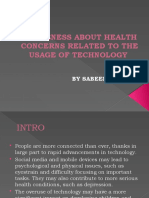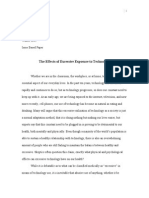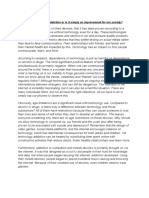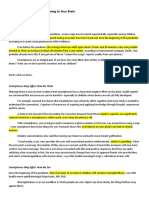## Bing
Certainly! Here's an article discussing the negative effects of technology,
covering both psychological and physical aspects. While technology has undoubtedly
brought numerous benefits to our lives, it's essential to recognize and address its
potential downsides.
The Dark Side of Technology: Psychological and Physical Impacts1. Psychological
EffectsIsolationTechnology, particularly social media, was designed to connect
people. However, paradoxically, it can sometimes lead to feelings of isolation. A
study found that young adults who used social media extensively were more than
three times as likely to feel socially isolated. To combat this, consider setting
time limits for social apps and finding ways to reduce social media use.
Depression and AnxietyThe relationship between social networks and mental health is
complex. Positive interactions and social support online can lower depression and
anxiety levels. However, negative interactions and social comparison can have the
opposite effect. Being mindful of the types of interactions we engage in on these
platforms is crucial.
2. Physical Health EffectsEyestrainOur reliance on handheld devices, smartphones,
and computers can lead to prolonged screen time and, consequently, eyestrain.
Symptoms include blurred vision, dry eyes, and discomfort in other areas like the
head, neck, or shoulders. Factors contributing to eyestrain include screen glare,
brightness, viewing distance, and poor posture. Remember the 20-20-20 rule: every
20 minutes, look at something 20 feet away for at least 20 seconds.
Musculoskeletal ProblemsSitting hunched over screens for extended periods can
strain our muscles and joints. Poor posture contributes to back pain, neck
stiffness, and headaches. Regular breaks, proper ergonomics, and exercises to
strengthen core muscles can mitigate these issues.
Sleep ProblemsExcessive technology use, especially before bedtime, disrupts our
sleep patterns. The blue light emitted by screens interferes with melatonin
production, making it harder to fall asleep. Establish a digital curfew by avoiding
screens at least an hour before bedtime.
**Reduced


























































